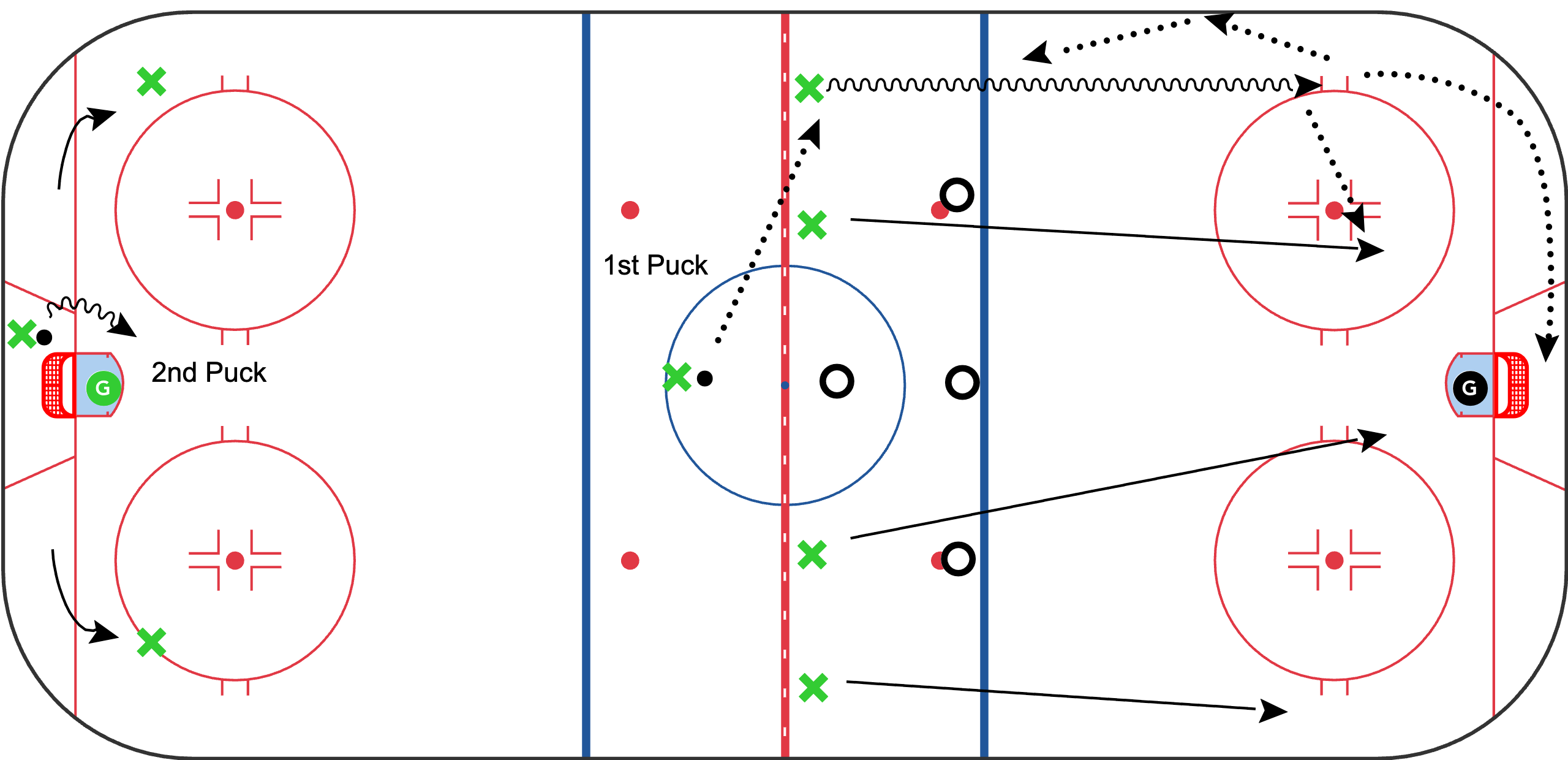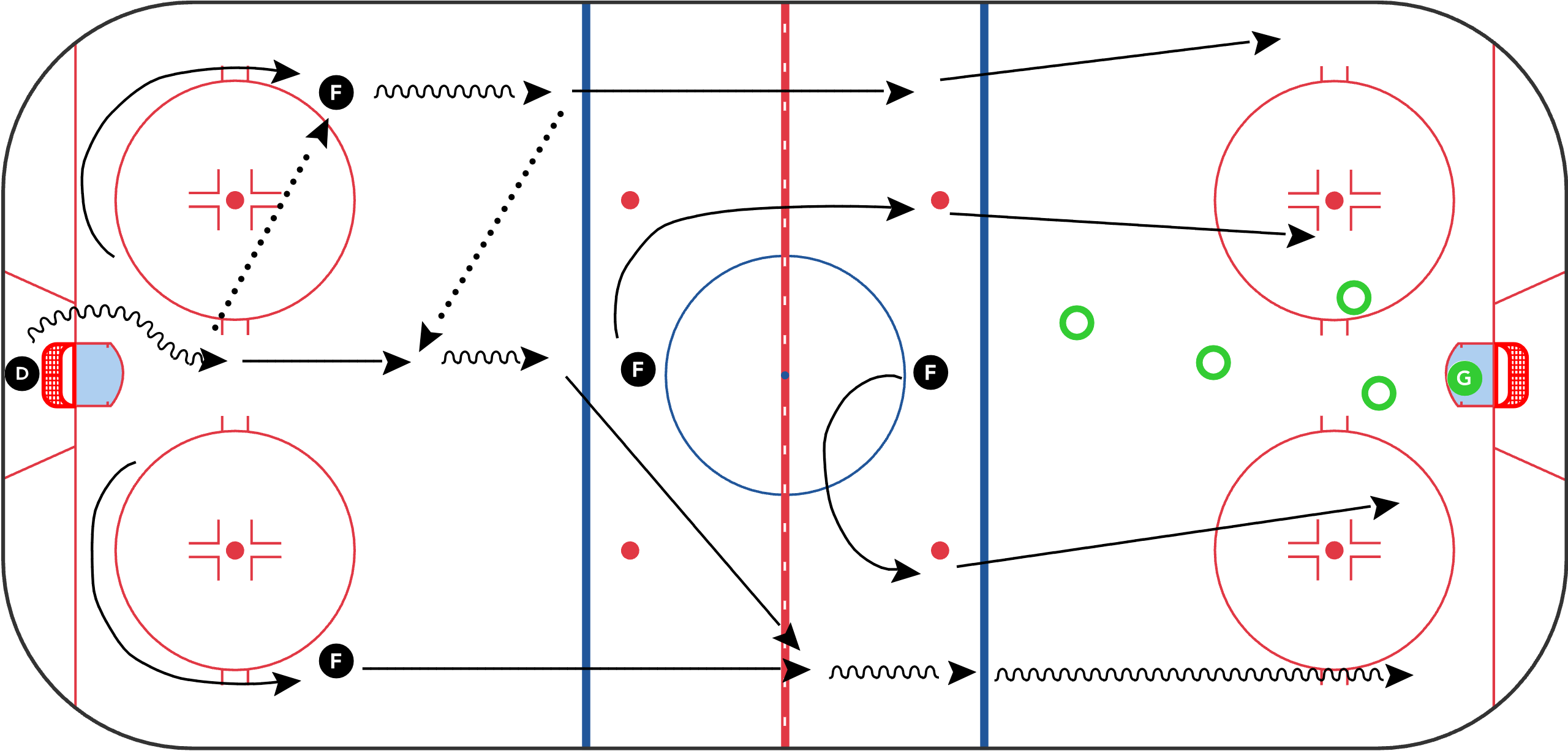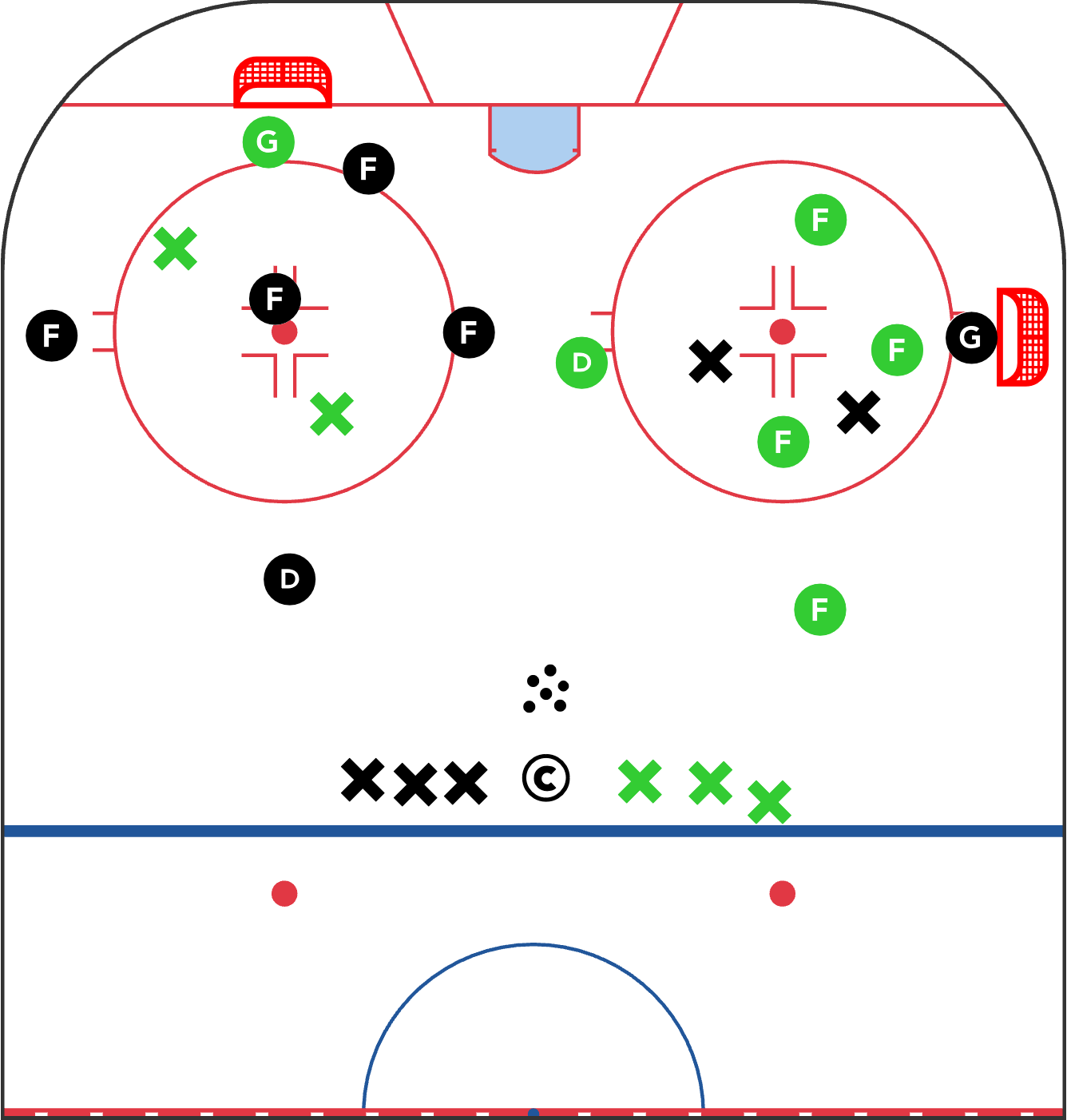
There aren't a lot of worse feelings as a coaching that receiving a power play in a game and instantly asking yourself if you should refuse the opportunity. It usually means your team is lacking in skill, structure, or both. Not fun! I'm breaking out into a sweat just thinking about it.
Let's start with the structure. A lot of power plays have success once they're in the zone and set up. If your team wins the faceoff and you move the puck quick to lock the killers into their formation, then you can go to work. But we have to get there first, and it usually means starting from a breakout. One element we don't spend enough time on is zone entries. Most PK units are content to let a team break the puck out of their zone, but they're designed to pinch at the blue lines with multiple players, force a turnover, and fire it back down the ice.
So let's start there. This drill starts with players standing in their routes after the breakout, but before they enter the zone. It's like placing pieces on a chessboard, easy to control.
Zone Entry Full Ice Power Play
Your power play breakout might change, but the rules don't: you can't go off-side. Most effective power plays have four players crossing the blue line at or near the same time. So don't worry about your breakout for a moment, just make sure players are in the proper spots.
Description
Powerplay sets up in zone entry lanes: middle players in middle, flanks on outside
1st puck zone entry setup options:
- Pull low and bump back to point (most effective)
- slip to mid lane player (hardest)
- rim to weak side (easiest)
2nd puck: coach sends puck to far end for breakout
- Run predetermined breakout, switch between sending PK forecheckers and keeping them in the zone

Power Play Breakout: Up Back & Over Stack
For the purposes of keeping things simple, we're actually going to start a little complicated, but it's by design. We want our stagnant power play players to not have to think, just react. This breakout will send players to natural routes on their forehand sides. As long as they know where to go initially, all they have to do after that basically is follow the puck.
Description
- D starts breakout from behind the net with two forwards swinging to either side
- Middle forwards from in-zone set-up stack in neutral zone
- When puck is passed to one side, low stacked forward supports puck carrier
- When / if puck is passed pack to D and moved to opposite swinging forward, high stacked forward supports
- Forwards automatically end up in zone entry lanes
This breakout works best if the two swinging players are on their forehand sides, which means they're on their downhill / forehand sides in the in-zone setup. Middle forwards always stay in the middle of the ice, drive the middle and finish routes at net.

Devils Small Ice Power Plays
Alright, back where we started in this post, but not where we start on the ice: in the zone. There are a lot of components, but ultimately the point of a power play is to score, and that usually doesn't happen off the rush (although we should try to make that happen more). I encourage you to run your power play's in-zone setup with the whole zone, but here's a game that will get everyone involved and, like my old coach in junior Dave Goretzki used to say with his unique central Albertan drawl, "just play hockey!"
Not a lot of time and space in this one, which is the point. Put players in their normal spots (net front goes in front of the net for example), and encourage quick puck movement. This is also great practice for the killers, they need stops and starts and active sticks.
Description
- Each unit sets up in their formation in front of either net
- Start with two killers on either side, progress to three
- Use one puck, killers on one side can pass to power play on other side
Formations can change, add killers, add powerplay positions, progress from 3v1 to 5v3, mix it up.
Focus on specific plays with each powerplay unit.
- Low kickouts
- Change sides and hit middle
- Bumper shots
- Bumper fake and pass to far flanker
- One-timers from flank














